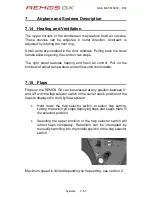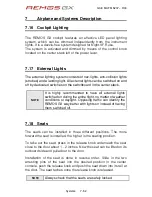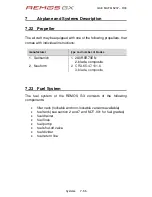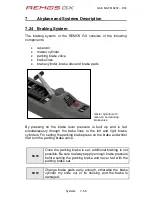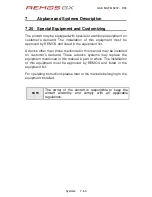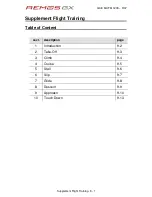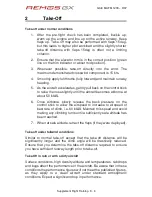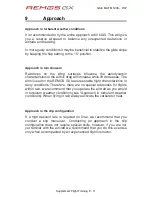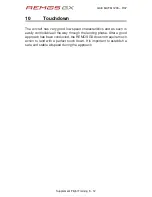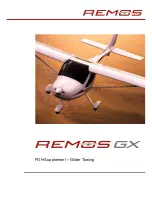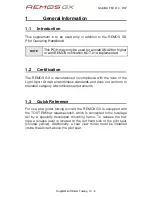
G3-8 MA FM 1209
–
R07
2
Take-Off
Supplement Flight Training 9 - 3
Take-off under normal conditions
1. After the pre-flight check has been completed, buckle up,
warm up the engine and line up on the active runway. Keep
flaps up. Take-off may also be performed with flaps 15deg,
but this leads to higher pilot workload and the slightly shorter
take-off distance with flaps 15deg is often not a limiting
criterion.
2. Ensure that the elevator trim is in the correct position (green
line on the trim indicator or about mid position).
3. Whenever possible, take-off directly into the wind. The
maximum demonstrated crosswind component is 15 kts.
4. Smoothly apply full throttle (fully forward) and maintain runway
heading.
5. As the aircraft accelerates, gently pull back on the control stick
to raise the nose slightly until the aircraft becomes airborne at
about
50 kIAS.
6. Once airborne, slowly release the back pressure on the
control stick to allow the airspeed to increase to airspeed of
best rate of climb, i.e. 60
kIAS
. Maintain this speed and avoid
making any climbing turns until a sufficiently safe altitude has
been reached.
7.
When at safe altitude, retract the flaps (if they were deployed)
.
Take-off under tailwind conditions
Similar to normal take-off except that the take-off distance will be
significantly longer and the climb angle will be drastically reduced.
Ensure that you determine the take-off distance required to ensure
you have sufficient runway length prior to take-off.
Take-Off in rain or with a dirty aircraft
Surface conditions, high density altitude and temperatures, raindrops
and bugs affect the performance of the aircraft. Be aware that in these
conditions the performance figures will not meet the published figures,
as they apply to a clean aircraft under standard atmospheric
conditions. Expect a significant drop in performance.
Summary of Contents for REMOS GX nXES
Page 12: ...G3 8 MA FM 5201 R01 1 General Information General Information 1 8 intentionally left blank...
Page 92: ...G3 8 MA FM 5205 R01 5 Performance Performance 5 14 intentionally left blank...
Page 163: ...POH Supplement Flight Training...
Page 177: ...POH Supplement Glider Towing...
Page 197: ...POH Supplement Banner Towing...
Page 213: ...POH Supplement Continued Airworthiness...
Page 229: ...POH Supplement Abbreviated checklists...
Page 235: ...G3 8 MA FM 1213 R01 Imprint Supplement Abbreviated Checklists 13 6 intentionally left blank...


